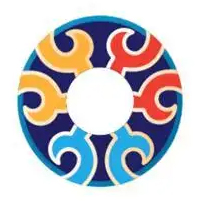Cloisonné Art: A Craft Coexisting with History
1. Origins and Development
Cloisonne art, also known as copper-wire inlaid enamel, originated in the Western regions during the Yuan Dynasty. At that time, the Mongol army embarked on expeditions across Eurasia and brought back many craftsmen who created luxurious daily necessities for the Mongolian nobility. At the same time, decorative enamelware with splendid metal frames was popular in the Arab region. The art of cloisonne first originated on the island of Cyprus, which was part of the Mycenaean civilization closely linked to the ancient Greek civilization.
2. Introduction to China
After existing in Europe for a long time, cloisonne was finally known by the Chinese. Gu Wenjian of the Southern Song Dynasty recorded a rudimentary form of cloisonne in his book 'Fuxuan Zalu', describing a vessel made of copper as the base, decorated with cloisonne wires, and painted with enamel. After cloisonne was introduced to China, it integrated with domestic culture and developed into a new type of craftsmanship distinct from its original form.
3. Royal Patronage
During the Ming Dynasty, cloisonné reached its peak and became a royal craft. The Ming emperors decreed that only the royal family could produce and use cloisonné. In the Qing Dynasty, the cloisonné craft improved on the foundation of the Ming Dynasty, with thinner body, finer enamel wires, and more vibrant colors, although the decorative motifs were not as lively as those in the Ming Dynasty.
4. The Peak of the Kangxi, Yongzheng, and Qianlong Periods
The Kangxi, Yongzheng, and Qianlong periods of the Qing Dynasty were another peak period for cloisonné, and most of the surviving works come from this period. During this time, the emperors Kangxi, Yongzheng, and Qianlong promoted the development of cloisonné art to new heights.
5. The Origins and Development of Cloisonné
The book 'The Origins and Development of Cloisonné' produced by the Guanfu Museum presents the history and development of cloisonné in full-color large format printing. The book traces the origins and dissemination of the cloisonné craft, revealing how the emperors during the Kangxi, Yongzheng, and Qianlong periods promoted the development of cloisonné art. At the same time, the book reveals some little-known secrets of cloisonné, allowing readers to gain a deeper understanding of cloisonné art while learning about its history.
Note: This article and the books and institutions mentioned in it are just examples and do not actually exist.

